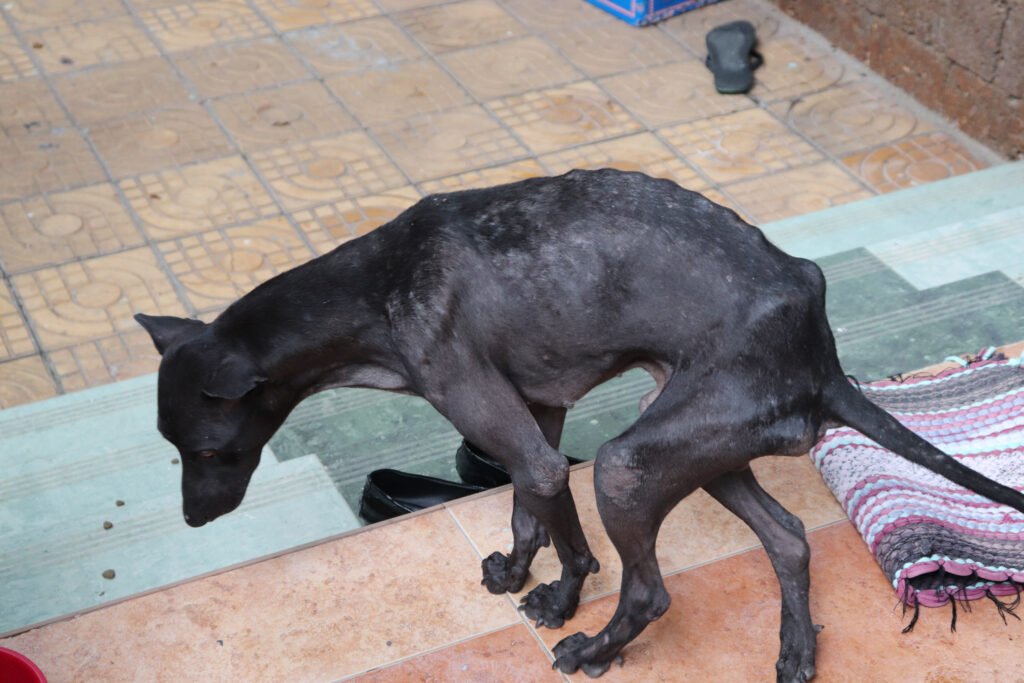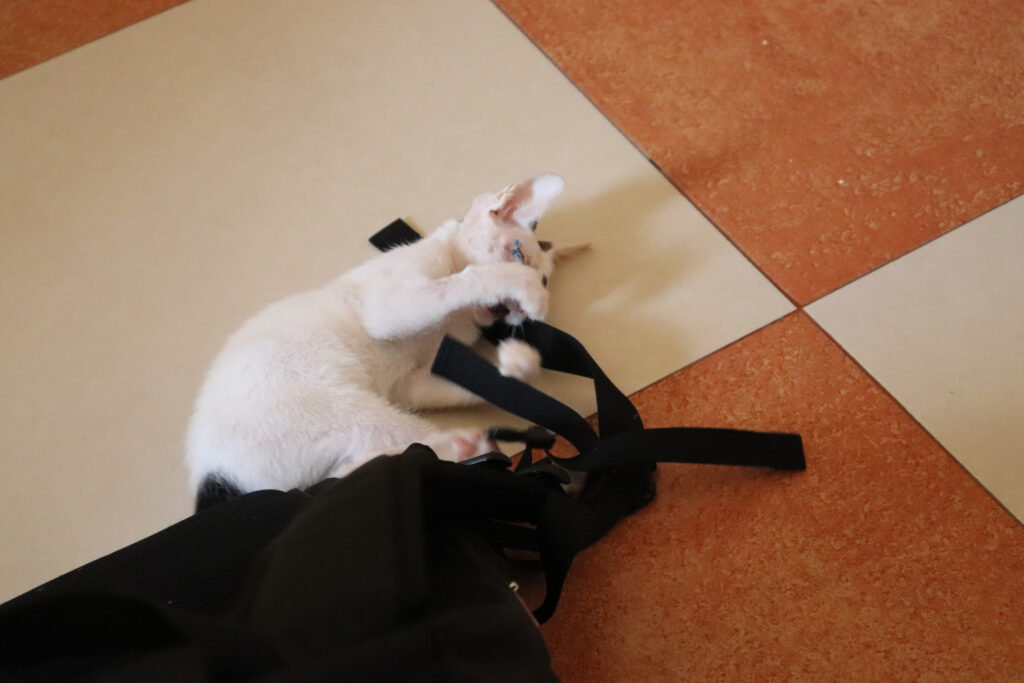ANIMAL RESCUE CAMBODIA
Founder Ms. Martina Mayr
– First, can you tell us about your activities?
We focus on three aspects. Outreach, veterinarian education, and neutering.
For outreach, one of the activities is in Buddhist pagodas. A pagoda usually has 50 to 100 animals including cats and dogs. We help the residents take care of the animals. We give locals a basic introduction on how to feed the animals, how to give them medication and eye drops, and introduce them to common health issues. This way, they can treat the animals by themselves with the medications we provide, unless the animals are very sick and need hospitalization at ARC.
Another program is veterinary education. Veterinary medication in Cambodia has not yet reached international standards. Further, students mostly learn about farm animals, not cats and dogs. We have two full-time veterinary trainees at ARC. They receive full-time training to become skillful and knowledgeable veterinarians.
The third program is related to neutering. We desex animals to reduce the unnatural amount of stray animals on Cambodian streets. There is not enough access to food for all of them and due to overpopulation, they easily spread diseases among themselves.
The best way, most sustainable way to help them is to desex them. This way, there will be fewer sick and injured animals on the street in the future. We collect and desex street but we also offer free neutering to pet owners.
– When did you establish the organization?
In March 2016.

– After 2 and a half years, of operating this organization, how did things change compare to the beginning?
A lot of things have changed quickly. First of all, we have managed to get a lot of monks and locals on board our program. In the beginning, people were against it because they did not understand the procedure or the benefits. But now, there are many pagodas that we work with on a weekly basis. They understand that neutering is benefiting the animals’ lives.
Also, in 2016, mostly foreigners adopted animals from us, but this year, we have a significant rise in the number of Cambodians adopting rescued animals. It seems more and more Cambodians are aware of animal welfare and are interested in contributing to it.
– How many animals do you usually have in the adoption center?
We usually have 50 – 60 animals in the center. The center is divided into 2 sections. The adoption center houses 20 animals, who are ready for adoption. The recovery center usually houses around 30-40 animals. These are animals that receive health treatments and/or are being neutered. Most usually stay for a couple of days, until their treatments are completed, before being returned to the streets.
We have treated more than 600 cats and dogs this year. 32 have been adopted so far. We do it all free of charge as we are fully non-profit. We do, however, encourage those who can, to donate towards our rescue and treatment missions.


– Is there a difference between how people in developed countries treat pets and how people in developing countries, like Cambodia, treat pets?
I have noticed a lot of active cruelty towards animals in Cambodia. There is an urgent need to educate people about responsible pet ownership.
Further, there is no animal welfare law that protects cats and dogs. Such laws are common in developed countries. However, the younger generation seems to be getting more interested in the welfare of their animals. We receive more and more calls from young locals, asking us questions about their pets’ health.
Moreover, pets are often treated like accessories in Cambodia. For example, Huskies are very popular breeds among the wealthy population. Keeping a Huskie in a country like Cambodia is nothing less than animal abuse. Sadly, many believe that Huskies are a status symbol and buy them from pet shops. Huskies are expensive, and not everybody can afford them. Just like accessories. The well-being of these dogs is secondary. They need to run for several hours every day to stay healthy, and they need cold weather. Simply keeping them in an air-conditioned room is cruel.
However, as I said earlier, I feel that it is slowly changing. Especially, younger people seem to show more interest in actual animal welfare.
– What do you want to tell people most?
Most importantly, people, please do not look away. If you see an animal that needs you, please help it!
For instance, when an animal is hit by a car, many people would not stop to help it. You may not have caused the accident, but once you see an animal in need, it becomes your responsibility too. Animals feel fear and pain, just like we humans do. Let’s treat them the way we would want to be treated. Animals may look different than us but, life is a life and a soul is a soul.











